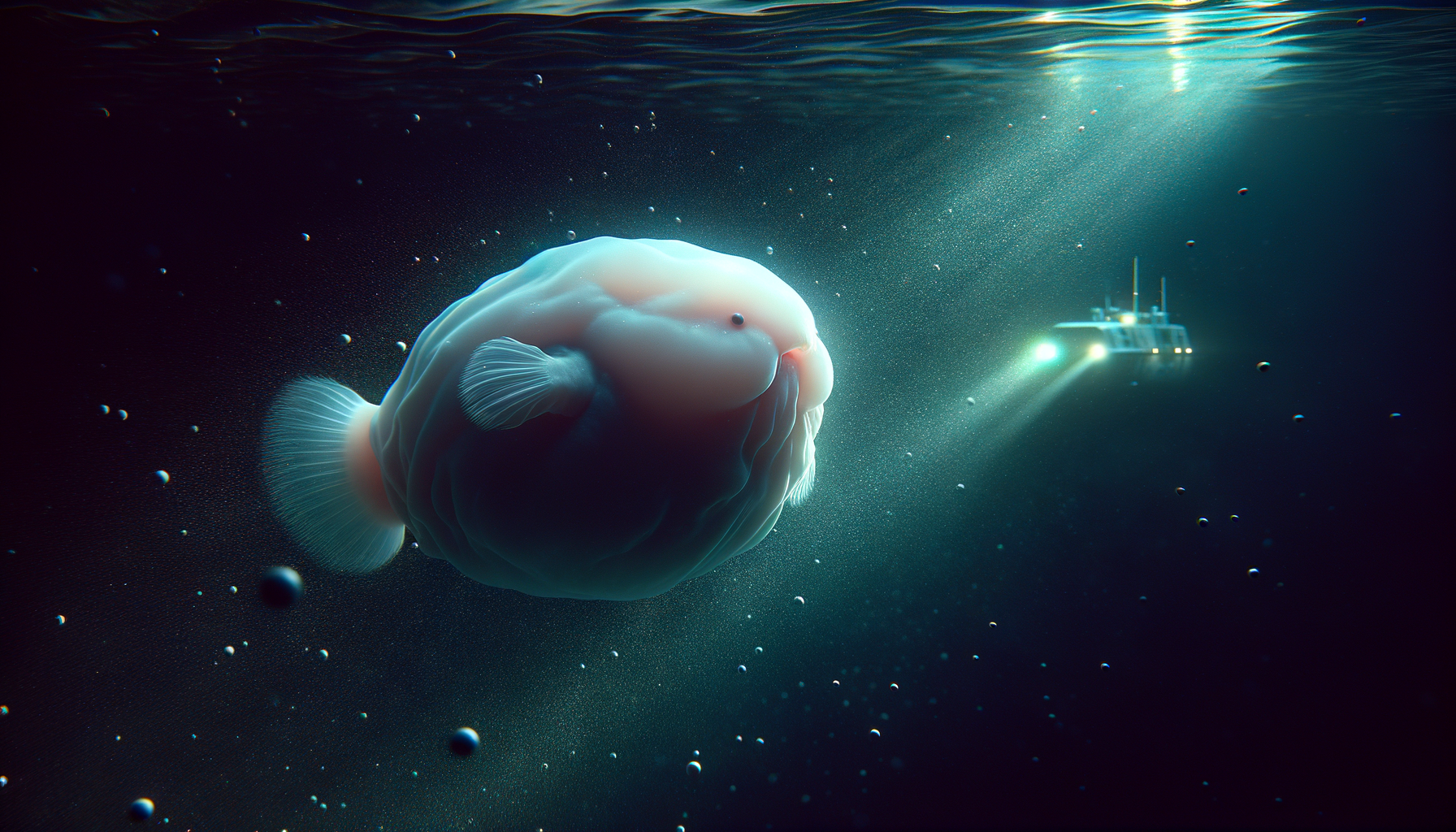Ah, the blobfish! A creature of the deep that’s risen to internet stardom for its looks that many find, well, unique. But how much do we really know about this gelatinous sea dweller, often recognized for its droopy appearance in viral photos? Let’s dive into the life and mysteries surrounding the famous blobfish and uncover why it’s more than just a peculiar face online.
What is a Blobfish Anyway?
Known scientifically as Psychrolutes marcidus, the blobfish has earned its title as internet-famous for its distinct, droopy appearance outside its natural habitat. Often adorned with the playful nickname “Mr Blobby”—after a British TV character infamous for its quirky antics—the fish has captivated audiences worldwide, often misunderstood due to its looks when photographed out of water.
Diving Deep into its Habitat
The enigmatic blobfish resides in the pressure-laden abyssal zones of the ocean, dwelling between 600 and 1,200 meters underwater. In these depths, blobfish inhabit an environment where the pressure is 100 times that at the surface, an adaptation that would be insurmountable for most other creatures. This extreme environment shapes its physique into the firm-bodied fish seen in its home territory, starkly contrasting the droopy image seen when brought to the surface.
The Real Look of a Blobfish
Contrary to its surface photos, the natural habitat look of a blobfish is far from the gelatinous lump seen in viral posts. Its look is a result of decompression, which causes its body to expand and its features to distort outside of the intense pressure of deep waters. Typically, a blobfish measures under 30 centimeters in length and weighs less than 2 kilos. Its body, composed of soft bone and minimal muscle, allows it to maintain buoyancy and pressure resilience in a way uniquely suitable for its deep-sea niche.
Immobile Yet Clever: The Blobfish Lifestyle
The blobfish’s lifestyle fits its appearance—unhurried and efficient. Unlike regular fish, it doesn’t battle currents or pursue its prey actively. Instead, its high-fat body content enables it to float above the seafloor, conserving energy in a seemingly perpetual lazy hover. This flabby constellation of blubber and bone illustrates the natural adaptation at its best—doing less to gain more.
- Energy Conservation: Relies on natural buoyancy to float.
- Feeding Habits: Consumes passing substances instead of hunting.
- Movement: Very minimal due to efficient energy strategy.
Facing Perils From Above
Even with its perfect adaptation to deep-sea life, the blobfish is not immune to threats from above. Human activities, such as deep-sea trawling, present a potential danger to these fish, though the exact impact remains unknown due to the species’ elusive nature. The trawling not only disrupts their habitat but also risks catching them unintentionally, posing questions on the sustainability of such practices.
| Depth (meters) | Pressure (Times Earth’s Surface) | Blobfish Activity |
|---|---|---|
| 600 – 1,200 | Up to 100 | Low energy floatation and feeding |
Why Does This Matter?
While the blobfish might be tagged with the title “ugliest animal,” it provides a fascinating insight into the peculiar adaptations of deep-ocean life. Through its physical resilience and unique survival strategies, it challenges our understanding of beauty and function. Imagine we reversed roles, plunging humans 1,200 meters under the sea without aid; we might not look too pretty ourselves but would similarly adapt to survive.
Final Thoughts
In learning about the blobfish, we uncover more than what goes on beneath the waves; we see how shifts in environment highlight key facets of survival and the profound impacts of human activity on even the most remote corners of the ocean. Perhaps this could lead us to reconsider what it means to label something as “ugly” or “beautiful” when viewed from the lens of survival and adaptation.

